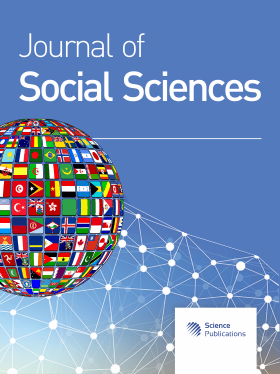Conservation and Development of Indigenous Knowledge of the Use of Water Buffaloes
Abstract
Problem statement: The use of water buffalo labor for farming and tie between rice farmers and water buffaloes at present are greatly decreasing because rice farmers give more importance to modern ploughing machines than water buffaloes. Water buffalo rising and traditions and rituals involving them which have been useful to humans for a very long time almost all disappear from Isan (Northeast Thailand). The purposes were to examine current conditions and problems and indigenous knowledge of the use of water buffaloes and to investigate the process of conservation and development of the use of water buffaloes in different forms in Isan. The study was conducted in Isan covering 8 Changwats: Nakhon Phanom, Sakon Nakhon Nong Bua Lam Phu, Udon Thani, Khon Kaen, Ubon Ratchathani, Kalasin and Roi ET. Approach: The qualitative research methodology was used. Data was collected from related literature and field studies using structured and unstructured-interview forms, workshop and focus group discussion with 199 informants. The findings were presented by means of a descriptive analysis. Results: The conservation and development of indigenous knowledge of the use of water buffaloes in all the 8 Changwats of Isan had increasingly changed from the past. For water buffalo conservation at present, they have formed groups in cooperation with government agencies involved according to government policy in each period. The group members are not confident that their own group will be able to sustainably exist due to the factors which are the state policy in other parts involved. Some factors can impact the water buffalo conservation groups such as limited places for water buffalo rising, the buffalo rising places being changed to be pear tree farms, for planting eucalyptus trees and others. The uses of water buffaloes as labor and in different cultural rituals and traditions have decreased because the number of water buffalo risers is small; the indigenous knowledge of healing and health care of water buffaloes using herbal medicines and black magic which have been traditional beliefs has not been adhered to by anyone and the use of water buffalo manure has no development at all. Conclusion: In the past, humans and water buffaloes had great tie with one another. Farmers also used water buffaloes as labor in farming which could help save expensed create incomes and they are heritages for children in new generations. At present, there is very little water buffalo conservation. The development and adherence to the indigenous knowledge have been decreased. In some local areas these things have disappeared.
DOI: https://doi.org/10.3844/jssp.2011.495.497

- 4,974 Views
- 2,868 Downloads
- 0 Citations
Download
Keywords
- Water buffaloes
- indigenous knowledge
- conservation groups
- herbal medicines
